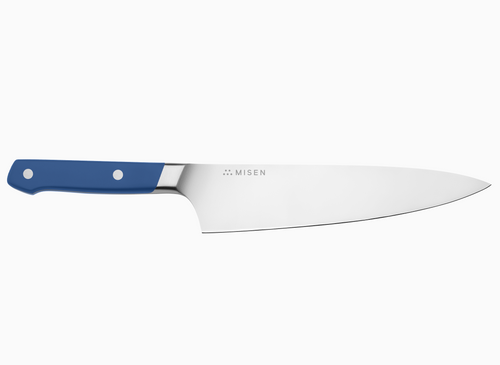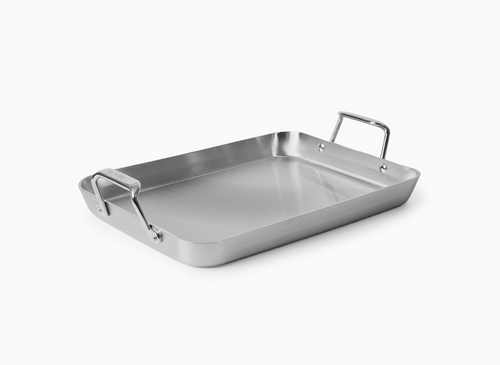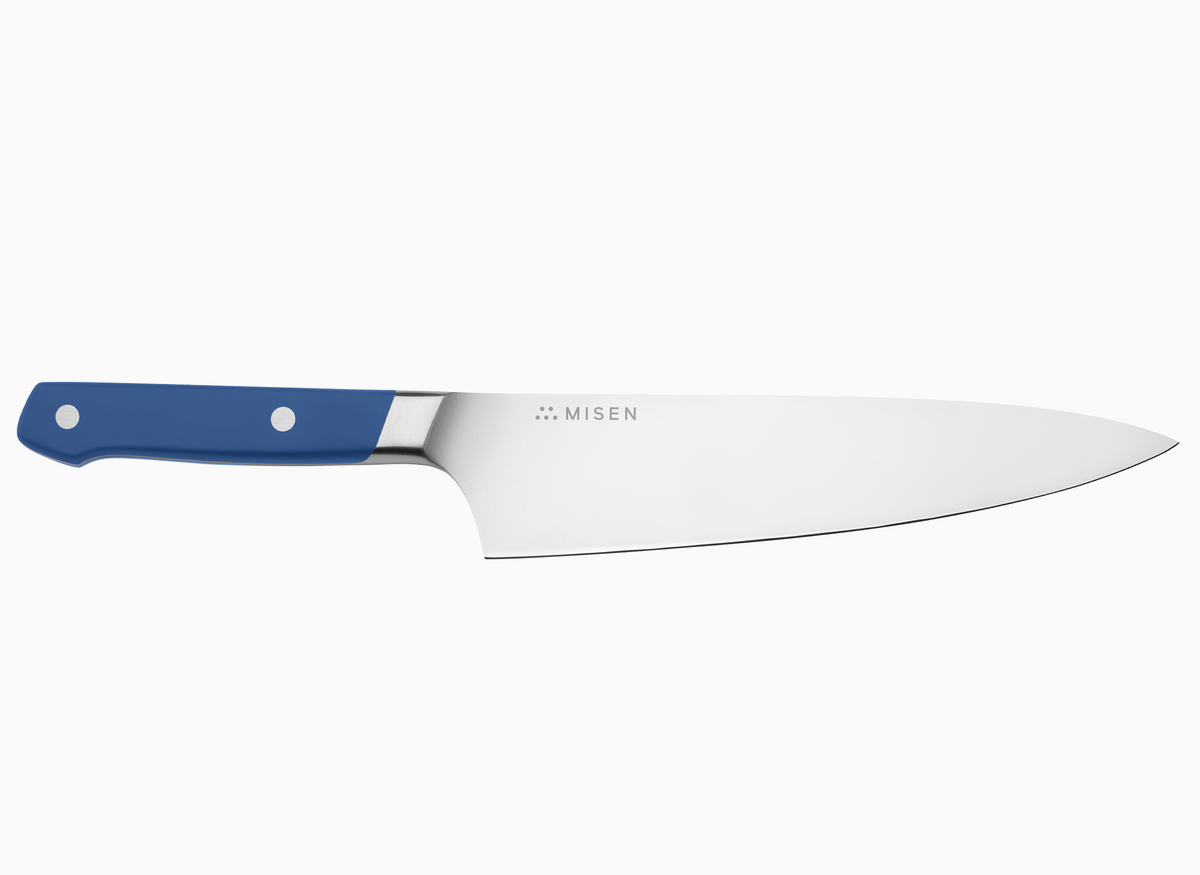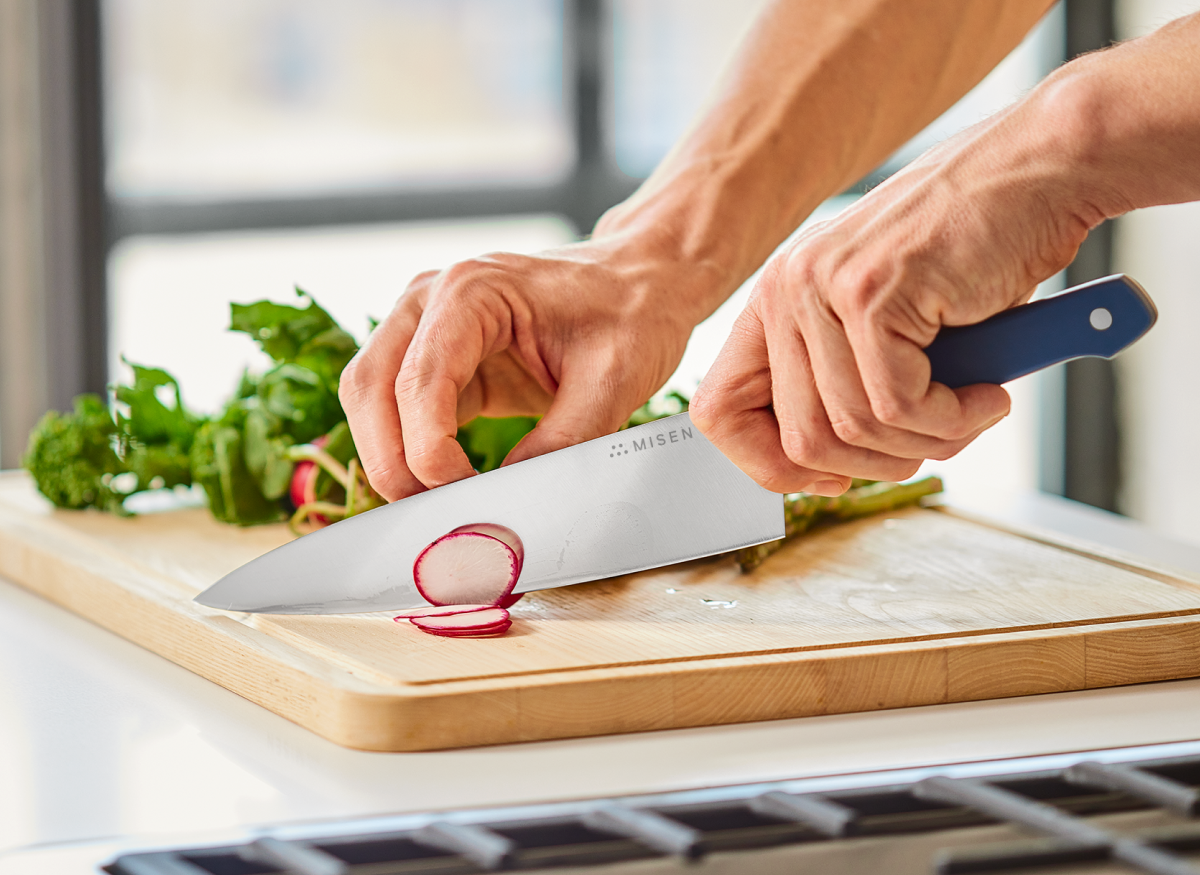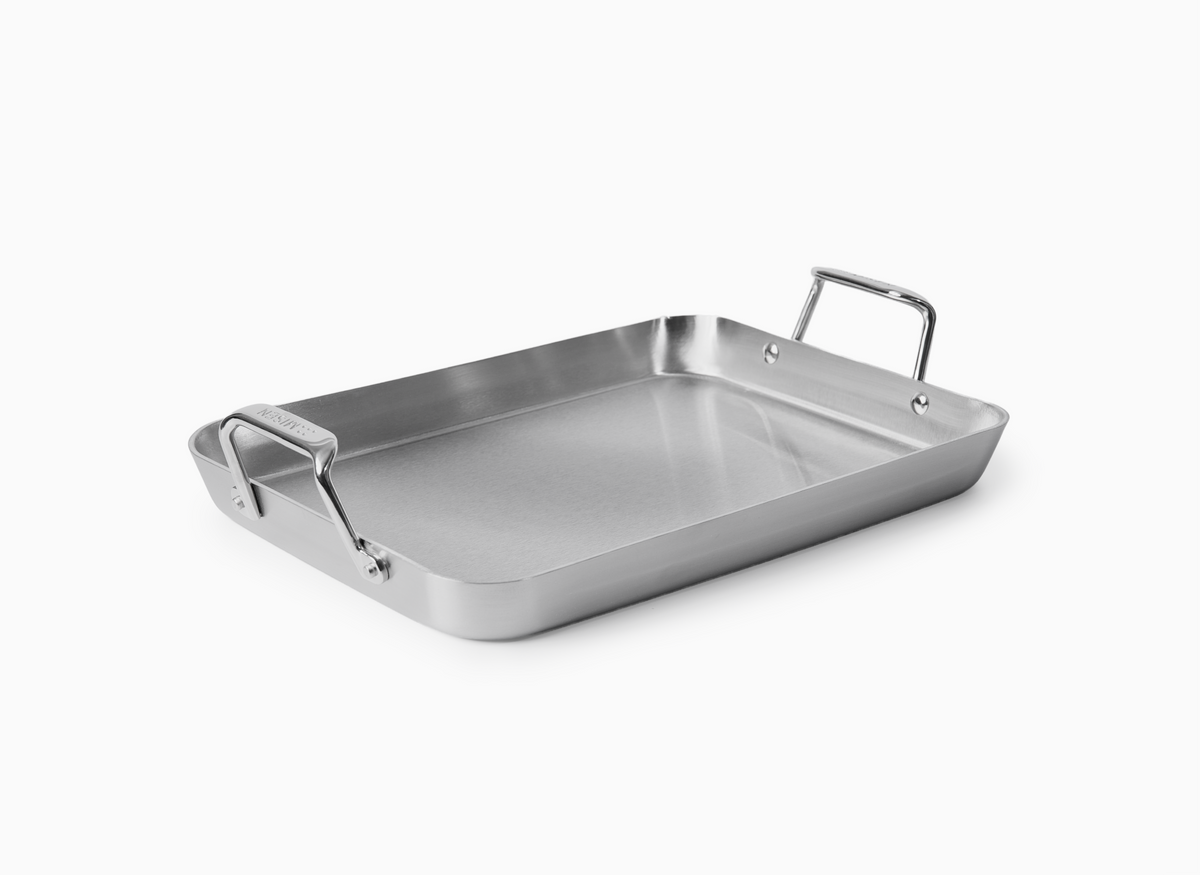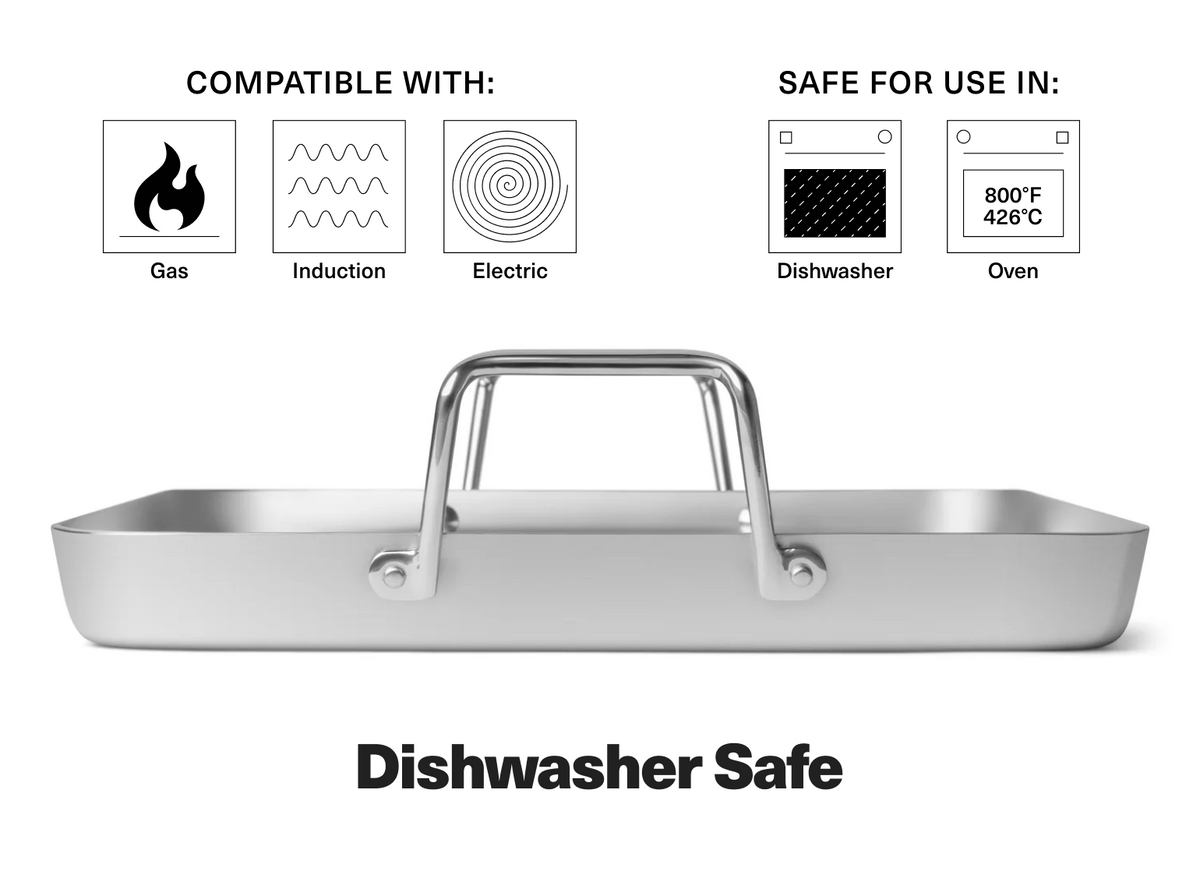Why a Serrated Knife Belongs in Your Kitchen
 Quality serrated kitchen knives have broad, deep, and pointed serrations.
Quality serrated kitchen knives have broad, deep, and pointed serrations.
- Serrated knives easily slice through food with thick or resistant outer surfaces.
- The serrated design of a quality knife is so efficient that it will still slice when the teeth and gullets become dull.
- A thin but sturdy blade made of high-quality stainless steel helps retain the sharp edges of the teeth and gullets.
The right tool for the right job. It’s a philosophy with universal appeal — even in the kitchen. You wouldn’t, for example, try to cook a steak with your toaster. But there is an overwhelming number of tools we can buy for the kitchen, and you have to know what they’re supposed to do before you can decide if you have the right tools.
Take that knife with the teeth. The serrated one. It kind of looks like a saw. Why was it designed that way? What does it do? What is its right job?
Why You Need a Serrated Knife
Serrated knives are also known as bread knives. They’re distinguished by the saw-like appearance of the blade’s edge. This design makes the serrated knife highly efficient at certain kinds of cutting. It easily slices through food with thick or resistant outer surfaces. Thick as in a crusty loaf of bread. Resistant as in the skin of a tomato.
Think about the plain, non-serrated edge of a chef’s knife. The razor-sharp edge allows you to make a cut when you force it into the food. In fact, a chef’s knife can cut, shave, chop, peel, slash, and more. Because of this, a chef’s knife will see more action in the kitchen than a serrated knife.
The plain edge of a chef’s knife is suited to a wider variety of knife work than a serrated knife. But the chef’s knife’s true specialty is force cuts. You’re making the cut by forcing the blade all the way through the food. The non-serrated edge moves only in one direction.
The serrated blade is designed for a different kind of use. Serrated blades excel at slicing cuts where you drag the edge across the food. There’s no better example than cutting a loaf of bread. You have to get through the tough outer crust, but you’ll smoosh or compress the soft inner part of the bread if you try to make a force cut. So instead, you use the serrated edge to grip the crust and make the initial cut. The unevenness of the blade catches and incises food by moving transversely over what you’re cutting. The movement starts out as more parallel than perpendicular.
The high points, or teeth, of the serration meet up with the crust first. There’s more pressure at these points. They puncture and tear the crust. When you reach the soft inner part of the bread, the chiseled, moon-shaped gullets continue and make a clean slice.
The serrated design also offers superior edge retention. You’ll regularly hone and sharpen other kitchen knives — perhaps a few times each year, depending on use — but your serrated knife may only need to be sharpened after several years of use. The serrated design of a quality knife is so efficient that it will still slice well even when the teeth and gullets become dull after years of use. This is due to the chisel grind of the serrations, which get less contact with food during cutting.
Best Uses for Serrated Knives
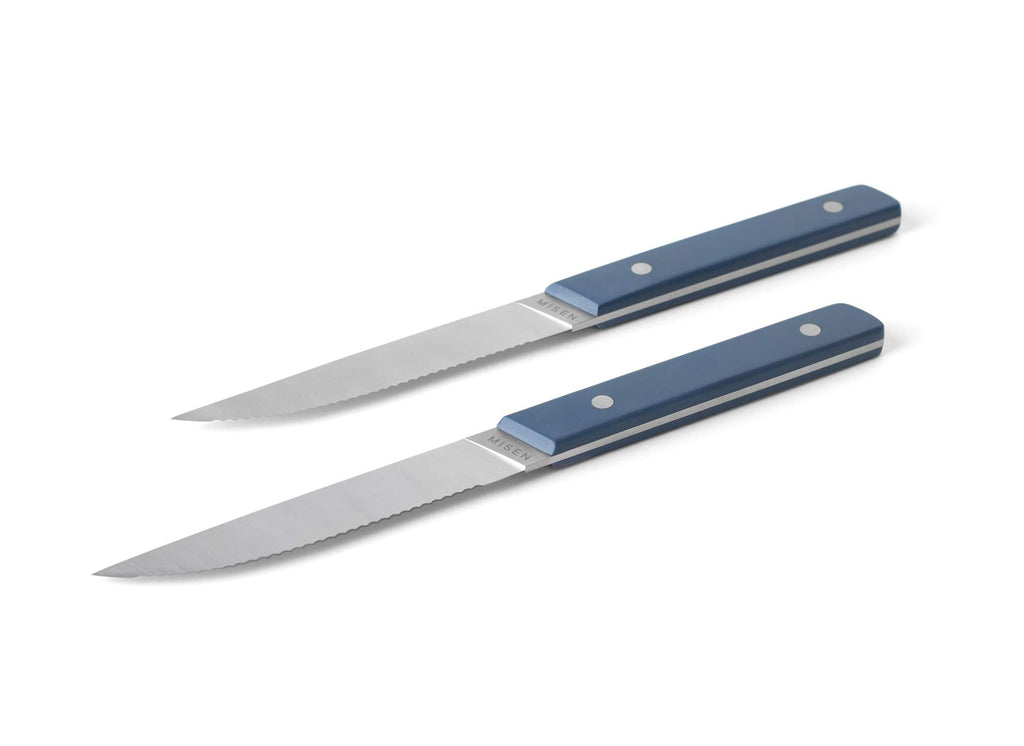 Serrated blades are a steak lover’s best friend.
Serrated blades are a steak lover’s best friend.
They do such a great job of slicing bread that serrated knives run the risk of being pigeonholed into this singular task. Your quality serrated knife can do much more. Bread isn’t the only food that’s hard on the outside and soft on the inside. And keep in mind that hard in this case also means difficult to pierce.
Any type of squash or melon is perfect for a serrated blade, as are any fruits or vegetables with qualities similar to a tomato — a soft and fleshy interior protected by a membrane or skin that has to be punctured before you can slice it. Your serrated knife is a better choice to slice up an eggplant or assist with creating thin and attractive slices of overripe tomatoes.
Carving up a roast is also easier with a serrated knife because you can easily cut against the grain of the meat. Many steak lovers also prefer a serrated knife blade on their steak knives because it takes less effort to make bite-size cuts.
What to Look for in a Serrated Knife
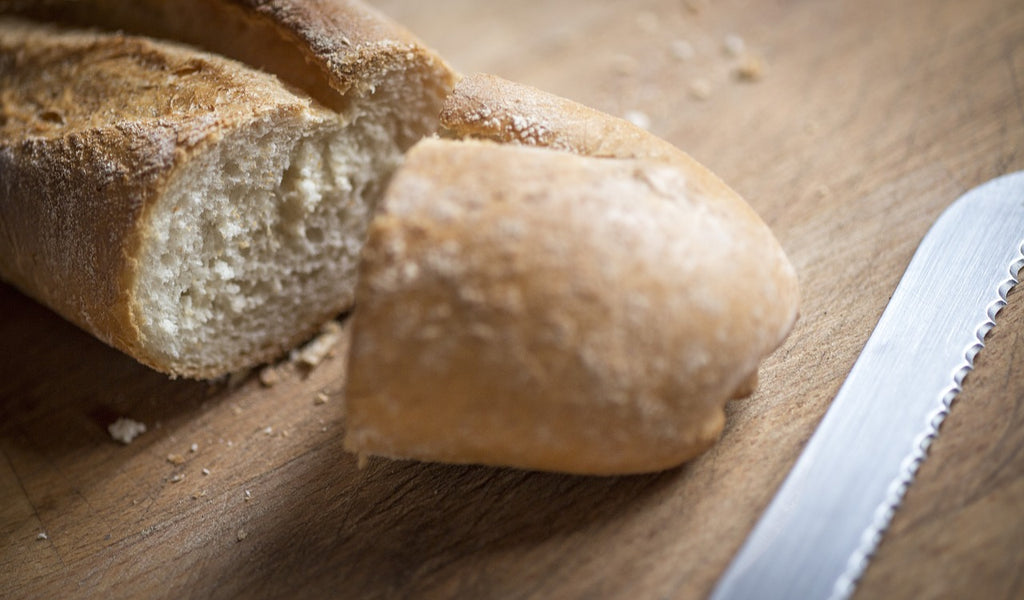 Chisel-cut gullets grab and cut through hard crust without tearing up the soft interior of a loaf of bread.
Chisel-cut gullets grab and cut through hard crust without tearing up the soft interior of a loaf of bread.
Quality serrated kitchen knives have broad, deep, and pointed serrations. The crescent-shaped concave indentations in the steel are called gullets. These gullets are chisel-cut at angles, making the concave indentations razor-sharp.
Some knives have scalloped or rounded serrations. These are backward serrations that extend outward. Instead of teeth, the blade looks as if it’s made of a row of symmetrical clouds. The theory behind this design is that the chiseled scallops will stay sharper and expose more of the angled blade to food. But the pointed ends of the concave crescents (rather than the cloud-like serrations) that offer more grip and bite into the food.
The Science Behind Serrations
Look for a serrated knife that offers lots of bite because it has pointed tips and fewer serrations that are spaced wider apart. Our serrated knife features 33 deep, pointed tips with extra wide gullets. There’s a reason that a lower number of serrations result in a better cut, and it has to do with physics.
You will exert pressure on what you’re cutting with a serrated knife, even though your objective is to push or pull the teeth across the food with a sawing motion. The force of that pressure is divided among the serrations. Simple math comes into play. The more serrations a knife has, the less power each one receives. Fewer serrations get more power, and they bite into food more readily. The same physics-related distribution of power applies to the surface area of each tip, so a pointed shape has more concentrated force, giving it more power to grip and bite into food.
Like chef’s knives, it’s possible to find serrated knives with narrower Japanese-style blade angles. This helps to make thinner and more precise slices. A thin but sturdy blade made of high-quality stainless steel helps to retain the sharp edges of the teeth and gullets. That’s important because serrated knives are not as easy to hone or sharpen as a knife with a non-serrated blade.
Pay no attention to the recommendation that you should just get an inexpensive bread knife that you won’t mind throwing away when it gets dull. Quality serrated knives can last you a lifetime. They are manufactured with fewer gullets so they stay sharper longer and can be resharpened.
Serrated Knife Handles and Bolsters
You may use it less frequently than your chef’s knife, but you’ll want to keep control over this knife as you make those saw-like movements and the serrations go to work. Make sure your knife has a handle that offers a good grip and doesn’t get slippery when wet.
A bolster will add safety as well. This is the part of a knife that can act as both a finger guard and a place to pinch and maintain a firm grip. Don’t be lulled into a false sense of security by a bulky bolster. Its mass won’t necessarily protect your fingers. Instead, look for a sloped bolster that rewards you with a secure grip.
Caring for Your Serrated Knife
It’s distinctly different from other kitchen cutlery, but serrated knives generally do not require specific care and handling — except for sharpening and honing. Even high-end electric knife sharpeners may not be capable of re-sharpening a serrated knife. This shouldn’t be much of a concern because serrated knives will reward you with clean and precise cutting for years before they need maintenance.
When your serrated knife no longer makes quick, clean cuts with minimal force, it’s time to have it professionally sharpened. If you purchased your knife from us, we’ll do it for free. Or you can manually sharpen it yourself.
If you can easily envision how the teeth and gullets of a serrated knife pierce and cut through something as unyielding as a crusty loaf of bread, you shouldn’t have difficulty imagining why it’s not a good idea to store it — or any sharp knife — loose in a kitchen drawer. Instead, use a magnetic knife holder to keep your knife safe and within reach. Or purchase an in-drawer knife holder that protects the blades and makes it easy to retrieve them.
Dishwashers and kitchen knives are an unfortunate combination. Your knives may be manufactured from quality steel, but the harsh formulations used in automatic dishwashing detergent will etch and dull them over time. Instead, use a mild liquid dish soap to hand-wash your knives. Then dry and immediately store them. Be mindful of the serrated knife’s teeth and chiseled gullets, as they can easily catch on loosely woven dish towels.
Serrated for Success
 A serrated knife is distinctly different from your other kitchen cutlery.
A serrated knife is distinctly different from your other kitchen cutlery.
You need just three quality knives to do just about everything in the kitchen. A serrated knife is one of this important trio. Call it a bread knife if you prefer but don’t lose sight of the fact that its unique characteristics give it the ability to make saw cuts — which allow you to effortlessly cut through anything from a dense kabocha squash to delicate persimmons. It may not be your most frequently used knife, but you’ll appreciate your serrated knife when it’s needed.

